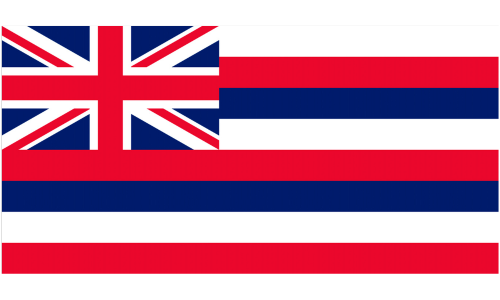

HAWAI’I
Population
Total: 1,440,196 (2022 est.)
Age Structure: 0-14 years: 20.3%; 15-64 years: 66.4%; 65 years and over: 13.3% (2020)
Population by gender: male 50.2%, female 49.8% (2020)
Urban population: 86.1% of total population (2020)
Diabetes rate: 9.5% adults aged 18+ years (2020)
Total fertility rate: 1.77 (2020)
Sanitation: There are approximately 87,000 cesspools in Hawai`i (the most in the nation) that pose a potential risk to water resources via holding untreated human waste that can seep into ground water. The cesspools throughout Hawai`i are estimated to release about 55 million gallons of untreated sewage into the ground per day.
Drinking water: Ground water supplies the vast majority of the Hawai`i’s drinking water. Five percent of drinking water is from surface water sources. There are 130+ Public Water Systems in Hawai`i. In calendar year 2018, 100% of Hawai`i’s residents and visitors were served drinking water that fell below all of the Maximum Contaminant Levels (MCLs) on a monthly basis. Even using conservative assumptions, the compliance rate has consistently exceeded 95.0%.
Ethnicity: White (24.3%), Black or African American (1.8%), American Indian and Alaska Native (0.3%), Asian (41.6%), Native Hawai`ian and Other Pacific Islander (9.4%), Some other race (1.3%), Two or more races (21.4%) (2020)
Languages: English only (73.4%), Spanish (1.7%), Other Indo-European languages (1.3%), Asian and Pacific Island languages (23.5%) (2020)
Literacy: 84%
Economy
Real GDP: $74,547,000 in 2012 chained dollars (2021)
GDP per capita: $58,185 (real, measured, 2018)
Top five state industries as percent of total GDP: Government and government enterprises 20.6%; mining, quarrying, and oil and gas extraction 14.0%; transportation and warehousing 13.6%; finance, insurance, real estate, rental, and leasing 12.3%; educational services, health care, and social assistance 8.7%; all others 30.7%
Top labor force occupations 2022: Office and Administrative Support (13.4%), Food Preparation and Serving Related (12.4%), Sales and Related (8.6%), and Transportation and Material Moving (8%). Top industry employment 2020: Educational, health, and social services (19%), Arts, entertainment, recreation, accommodation and food services (16%), Retail trade (12.2%), and Professional, scientific, management, administrative, and waste management services (9.5%).
Unemployment rate: 3.5% (March 2023)
Poverty: 11.2 % (2022)
WIC: $57.68 average monthly benefit per person (preliminary FY2022)
Agricultural Product: Seed crops, macadamia nuts, coffee, cattle, algae, basil, food crops grown under cover, eggs, lettuce, cabbage, bananas, palms-potted, ornamental-aquaculture, papayas, green onions, phalaenopsis-potted, sweet potatoes, honey, dendrobiums-potted, anthuriums-potted
Top Industries: Visitor section
Exports: $660 million (2018); petroleum and coal products ($303 million), transportation equipment ($53 million), food and kindred products ($47 million), computer and electronic products ($21 million), and beverages and tobacco products ($16 million). Hawaii exported $371 million in domestic agriculture in 2017.
Imports: $2.52 billion (2022); petroleum spirit for motor vehicles ($456 million), light petroleum distillates ($184 million), medium sized cars ($155 million), petroleum oils from bituminous minerals ($152 million), and electric accumulators ($124 million). About 85-90% of Hawaii’s food is imported.
Transportation
Airports, Roadways/Highways, Harbors
Geography
Land: 6,422.48 sq miles (2020)
Natural Resource: Sugarcane, pineapples, coffee, macadamia nuts, flowers
Land Use: conservation (48%), agricultural (47%), urban (5%), rural (<0.5%)
Climate: Mild temperatures throughout the year, moderate humidity, persistence of northeasterly trade winds, significant differences in rainfall within short distances, and infrequent severe storms. For most of Hawaii, there are only two seasons: “summer,” between May and October, and “winter,” between October and April.
Environmental-current issues: Unsustainable impacts of tourism, urbanization, implications of climate change such as sea level rise, pollution, especially marine plastic pollution, and invasive species

